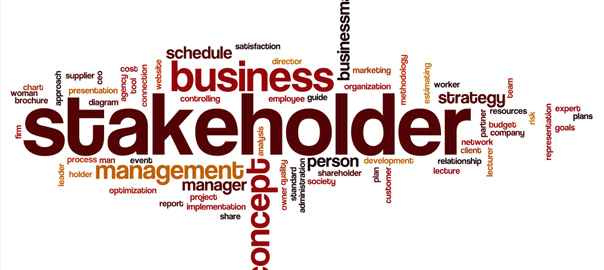Let’s start with the good stuff!
A person who holds a “stake” in the engagement or the project deliverable is a stakeholder. A person/department who has a vested interest in the outcome of a body of work is a stakeholder. As we all know, we have a very detailed, standard tool kit available for Project Managers/Change Managers to look into Stakeholder Management.
Tools such as Stakeholder Management Plans, the Power-Interest Matrix, Mind Maps, SWOT and PESTLE Analysis and Stakeholder Communication Plans, to name a few, can help you engage and build relationships with stakeholders. The engagement medium can vary from telephone, internet, teleconferences etc., through to face-to-face interactions, print or any other related media.
To cut the long story short; if one follows these standard stakeholder management tools and methodologies earnestly, you are bound to achieve the desirable results - am I correct? Yes? No? Maybe? Figure out the following scenario for yourself…
This is where it starts getting ugly
Location: Meeting Room
Audience: IT Project Manager (IT), Business Program Manager (BP), Consultants (C)
IT: “I have called upon this meeting to discuss a major concern. We were supposed to go live tomorrow but we cannot”
BP: “And you are informing us now? We were all good until yesterday to go live. So what happened in the meanwhile?”
IT: “Well, it seems like the System Integration Team will take two more days to migrate the new system from testing environment to the new production environment”
BP: “But I assume that they were involved in the discussions right from the start and they should have raised a red flag earlier. Why now?”
The IT Project Manager had no answer to this question.
When we drilled down into the cause of this communication gap, we figured out that the System Integration Team, who, turned out to be the “most important” people in this project’s implementation, were actually involved right from the very start. But somehow, the message was not passed efficiently enough to them. This team simply assumed that they were the ones who were just supposed to be “informed” and were not the ones who had to “act”. It’s a classic case of simple, straight-forward project implementation going haywire.
Reality bites!
Thomas Keller, renowned American chef and restaurateur said, “A recipe has no soul, you as a cook, must bring soul to the recipe”. That’s precisely what a change manager or stakeholder manager needs to do. He/she can make or mar a project by either ticking all the right boxes, leading to a fruitful outcome, or by accidentally ignoring some simple yet important steps, which can cause mayhem at the end, thereby, breaking the very “soul” of the project.
Very often, we tend to miss the softer aspects, the more subtle ones, during stakeholder engagement. Yes, we conduct all the stakeholder exercises meticulously, trying to tie up all loose ends etc. - but there is something more to it, a “people-driven” aspect If I may call it, that we miss.
One needs to ensure that you engage as early as possible. This is the first and foremost step that every stakeholder toolkit or a similar tutorial will tell you. But, engaging early is just not enough! Passing your message and building a connect is important. You need to pass your message in a clear, lucid manner to the stakeholders. They should be able to comprehend and imbibe what you are saying.
It is seen quite often that the stakeholder meetings are nothing less than just one-way traffic. We pass on the message nicely to the stakeholders but when it comes to the “listening” part, we hear what we want to hear, thereby creating a big mental obstacle. That’s precisely when the stakeholders start feeling disconnected. You need to get them connected and make them feel accountable.
The stakeholders might come up with certain viewpoints, which might not really sync in with the project’s goals and the target ‘to be’ state - but one does need to be open enough to listen to what they are saying. They might be sharing their views on something which is totally out of scope but you have to make them feel connected. And that’s when you will enthuse a sense of responsibility in them as well.
Still not good enough?
There are times when we have done everything that we possibly could, but, somehow, we still aren't able to get that elusive buy-in from the stakeholders. So what do we do in such a case? We tend to follow the easy way out most of the times. We tell them: “It has to be done this way because this is what the policy says”. That’s just another way of saying either my way, or the highway!
In fact, rather than encouraging the stakeholders to imbibe the change, we tend to make the change compulsory for them which will definitely drive them away. This is where the policy makers and the stakeholder management team need to think through.
After engaging with the stakeholders early, one needs to figure out their pain points, the day-to-day issues and challenges that they face. The new policies designed for the ‘to be’ state should be drafted in such a way that they should not only align with the company’s goal and vision, but also address the stakeholder’s issues in some way or the other.
I know it’s all easier said than done, but someone has to do it and it’s certainly doable, because again, “A recipe has no soul, you as a cook, must bring soul to the recipe”.




.png)


